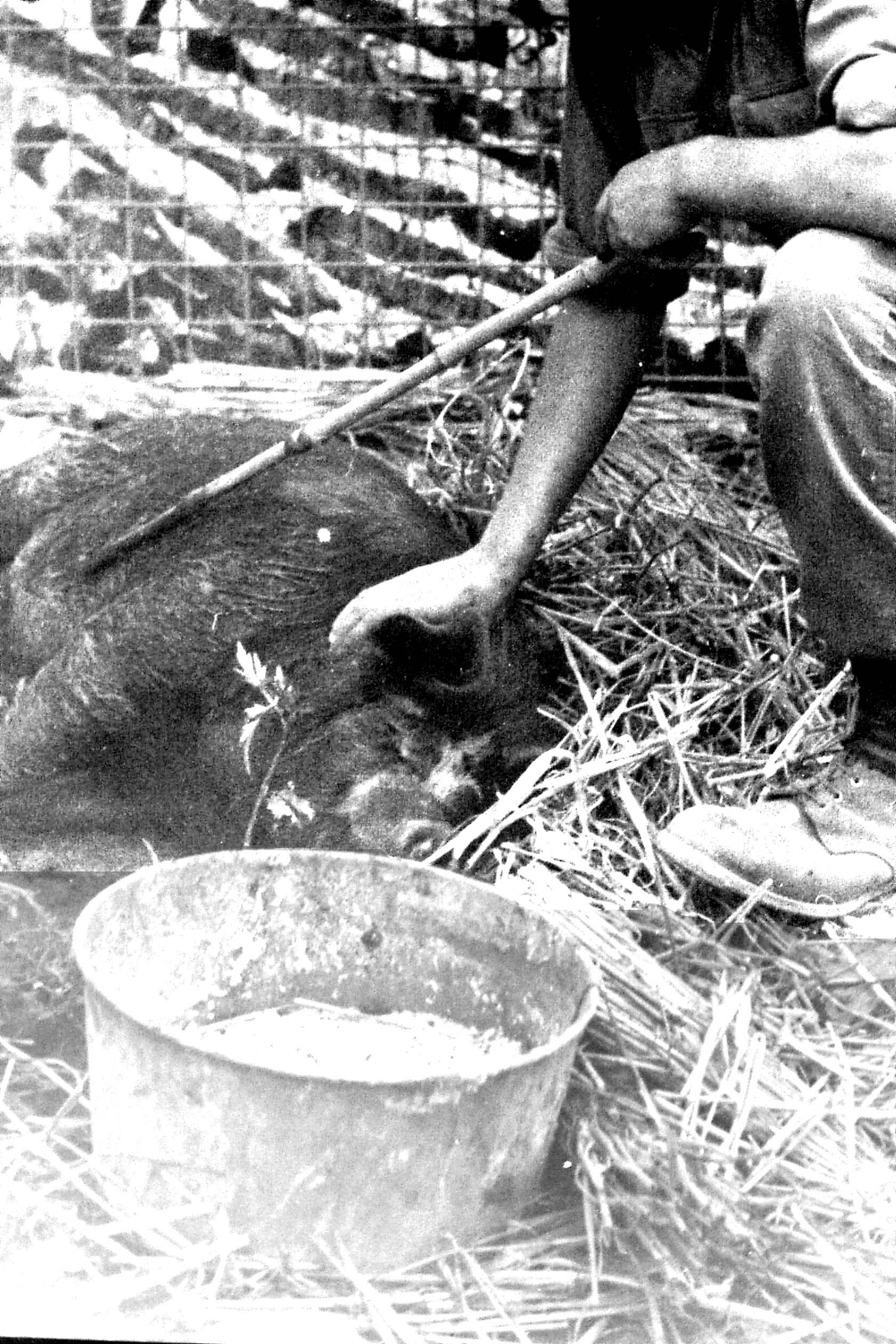Author Guest Post: Matt Merritt
A Korean Wild Boar in the Royal Engineers
On a rust-marked and stapled cream cover of one of my father, Frank Merritt’s handmade albums for his Box Brownie negatives had been typed ‘Negative Holder. Ref No: – … Subj: – … Type: – …’ Frank had made the album in Korea in 1953, when out there as a Royal Engineer. He had written in pencil in these fields: ‘Seoul’, ‘History & General.’ One of the photographs that he had taken was of a fellow sapper lovingly caring for a wild boar, kept in a mesh pen draped in camouflage netting.

The intense fighting and extensive fortification of the mountainous terrain during the Korean War had caused widespread destruction of the country’s dense forests. With the concealing trees and undergrowth of their natural habitat burned to ash, wild boar indigenous to Korea became so few in number that they became an endangered species. The war-ravaged landscape was strewn with minefields and soldiers desperate for food hunted Korea’s wildlife. With little natural food available, wild boar took to scavenging in towns and cities and their encounters with an equally hungry human population often didn’t end well for them.
Wild boars are known for their ferocious temperament and Frank learned a fellow sapper was secretly keeping and being very protective of this particular animal. Frank recalled that it became an unofficial mascot and honorary engineer among the sappers. Wild boars are also known to have a keen sense of smell. It is strong enough, as Frank recalled, to perhaps detect the explosives in hidden landmines. In the 21st century, pigs are used to detect land landmines in many countries.
The Korean Reports published by the Korean Pacific Press, Washington DC in the 1950’s, reported on forestry improvement. A Forestry Protection Law was passed on the 21 September 1951, during the Korean War to ‘arouse the people’s interest in forest and to protect forests in every province’. Korean forestry associations were founded and the felling of trees was prohibited unless deemed urgent for the country’s reconstruction programme. Before the law was passed, forests in South Korea were being cut down approximately three times faster than they were being replaced by annual growth, resulting in the net depletion of forest reserves and serious damage to the land caused by floods and erosion. In 1953, the Ministry of Agriculture and Forestry embarked upon an extensive forest improvement programme. Hundreds of thousands of seeds, seedlings and over 26 million cuttings were planted across barren areas. Forestry protection became one of the many tasks undertaken by the National Police. In 1954, the hunting of wild boar became heavily restricted and allowed in only certain areas. The reforestation improvement programme continued for decades with hundreds of millions of seedlings being planted to create commercially sustainable forests. A capture and release programme removed stray wild boar from urban areas relocating them to the forests. This increased the numbers of Korean wild boar, saving them from likely extinction.

Order your copy of The Royal Engineers in Korea here.

